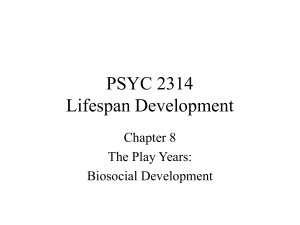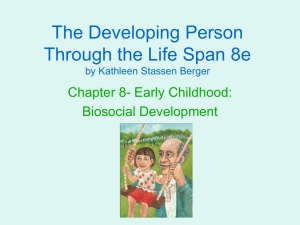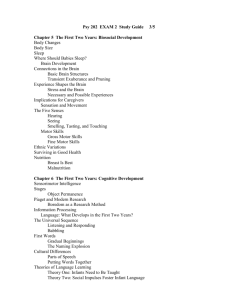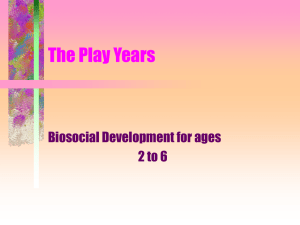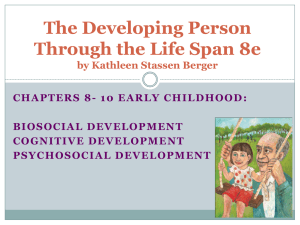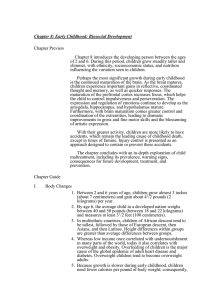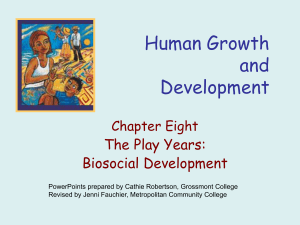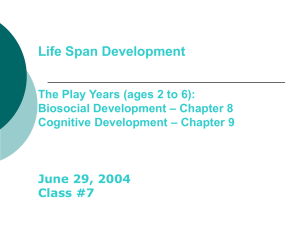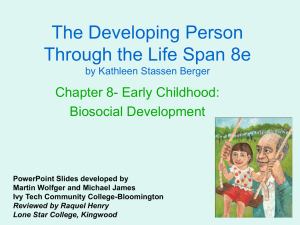Psychology 21 –Developmental Psychology: The Child
advertisement
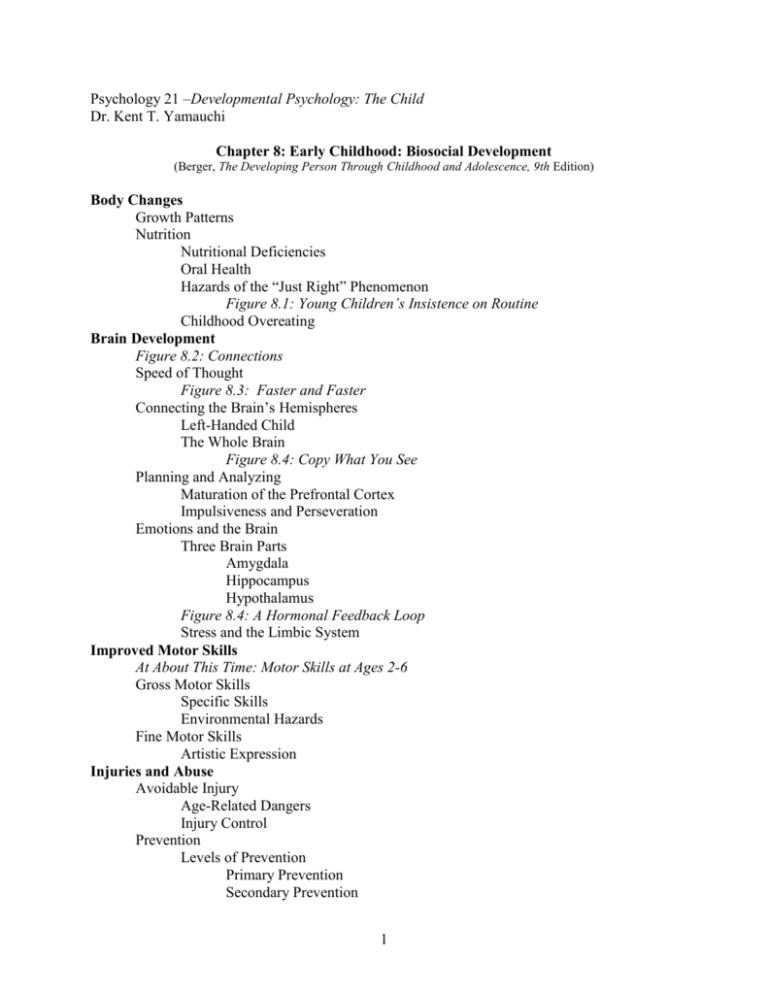
Psychology 21 –Developmental Psychology: The Child Dr. Kent T. Yamauchi Chapter 8: Early Childhood: Biosocial Development (Berger, The Developing Person Through Childhood and Adolescence, 9th Edition) Body Changes Growth Patterns Nutrition Nutritional Deficiencies Oral Health Hazards of the “Just Right” Phenomenon Figure 8.1: Young Children’s Insistence on Routine Childhood Overeating Brain Development Figure 8.2: Connections Speed of Thought Figure 8.3: Faster and Faster Connecting the Brain’s Hemispheres Left-Handed Child The Whole Brain Figure 8.4: Copy What You See Planning and Analyzing Maturation of the Prefrontal Cortex Impulsiveness and Perseveration Emotions and the Brain Three Brain Parts Amygdala Hippocampus Hypothalamus Figure 8.4: A Hormonal Feedback Loop Stress and the Limbic System Improved Motor Skills At About This Time: Motor Skills at Ages 2-6 Gross Motor Skills Specific Skills Environmental Hazards Fine Motor Skills Artistic Expression Injuries and Abuse Avoidable Injury Age-Related Dangers Injury Control Prevention Levels of Prevention Primary Prevention Secondary Prevention 1 Tertiary Prevention Figure 8.6: While the Population Grew A Case to Study: “My Baby Swallowed Poison” Child Maltreatment Maltreatment Noticed and Defined Figure 8.7: Still Far Too Many Frequency of Maltreatment Figure 8.8: Getting Better? Warning Signs Table 8.1: Signs of Maltreatment in Children Aged 2 to 10 Consequences of Maltreatment A View From Science: Emotions Are Hard to Heal Three Levels of Prevention, Again Summary 2
